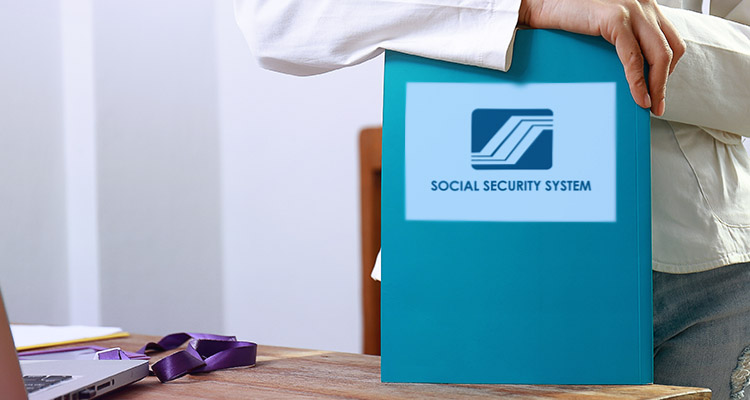DISCLAIMER: All views and opinions expressed in this article are those of the author and do not necessarily reflect the views and policies of Remote Staff. Readers are also advised to carry out their own research on the following matters prior to making any decisions pertaining to the same.
I’ll be honest. This was one of the toughest articles for me to write. Apart from the fact that it’s heavy on the research, my personal experiences processing government-mandated benefits for staff that I’ve handled in the past haven’t been very pleasant.
That said, I will try my best to be as objective as possible from here on out.
The subject of social safety nets is always tricky. Also, strong and robust social safety nets are typically indicative of a developed country. Thus, the opposite is also true for developing countries, which often struggle with proper implementation due to factors like corruption and red tape.
Prior to writing this article, I had a conversation with my boss and a colleague. The former is based in Australia while the latter spent a few years studying there, and their experiences blew my mind. One mentioned that she received a sizable amount of cash in her bank account after giving birth to her first child. The other recalled how he had Aborigine roommates who received a regular and livable subsidy from the government.
And apparently, neither of those things are particularly extraordinary. In fact, they’re routine occurrences Down Under.
As you can imagine, it’s quite a different story in the Philippines. Here, we have three primary programs that serve as social safety nets. Let’s take a quick look.
SSS: Social Security System Fund

Just about every Filipino that works in the private sector contributes to this fund for their retirement benefits. Government workers, on the other hand, are covered by the Government Service Insurance System or GSIS.
This government-mandated insurance program derives its funds from two sources. One is member contributions, which covers all private sector employees. The other is from investments. Leftover funds (those that aren’t required for benefit disbursements) go to a Reserve Fund. This is supposed to cover future liabilities for SSS benefit payments.
Monthly contributions are based on compensation. Currently, the SSS contribution rate is 11% of the monthly salary credit not exceeding Php16,000. This is further split between the employee and employer at 3.63% and 7.37%, respectively. It’s the same for self-employed members who remit voluntary contributions, except that they cover the entire 11%
Meanwhile, non-working spouses base their contributions on 50% of their working spouse’s salary. However, the resulting amount should not be lower than Php1,000.
The SSS uses three formulas to calculate a retiree’s monthly pension, with the latter entitled to the highest value from any of the three computations. However, members can only avail of lifetime pension support if they have contributed regularly for at least 120 months or ten (10) years. Otherwise, they can only claim a lump sum amount equivalent to their total contributions, as well as some interest.
SSS members can also avail of other benefits like loans and maternity or miscarriage payments. As with pensions, these are computed based on their declared monthly salaries and existing contributions.
Philhealth: National Health Insurance Program

Established in 1995, the National Health Insurance Program or Philhealth is meant to provide Filipinos with quality and affordable health insurance coverage. Its system of funds includes supplementary health insurance packages alongside the basic minimum packages.
As with SSS, employers in the private sector are mandated to provide Philhealth benefits for their employees. Usually, the monthly contributions are equally split between the employers and employees.
Self-employed workers, in contrast, provide voluntary contributions.
Philhealth members may also declare qualifying relatives as their dependents. These include legitimate non-working spouses, children below the age of 21, and parents who are 60 and older.
Some of the primary benefits include treatment coverage at accredited health care institutions. Generally, this comprises the attending physician’s professional fees, hospital charges, consultations, and certain diagnostic exams. Some outpatient procedures as well as radiotherapy, hemodialysis, and blood transfusions may also fall under Philhealth benefits, depending on where the patient avails of them.
Maternity benefits also apply to regular contributors, but there are certain limitations. Expectant mothers who’ve had a history of miscarriages or stillbirths, for instance, might have trouble claiming these benefits.
Lastly, Philhealth’s primary care benefits can sometimes cover medications for certain infections like UTI.
PAG-IBIG Fund: Home Development Mutual Fund

If SSS covers contributions for retirement and Philhealth does the same for healthcare, then PAG-IBIG is all about affordable housing.
The Home Development Mutual Fund (HDMF) or PAG-IBIG is a government-owned and controlled corporation under the Housing and Urban Development Coordinating Council. Primarily, this fund enables its members to take out affordable loans for purchasing residential properties.
However, members may only avail of these loans for houses, condominiums, or townhouses that don’t exceed 1,000 square meters. On the other hand, members can use a PAG-IBIG loan to refinance their current house or to help pay for necessary renovations.
As of this writing, members can obtain maximum financing of Php6,000,000 with up to 30 years for repayment. The actual loan granted would also depend on the member’s need, capacity to pay, and the loan-to-appraisal value ratio.
If you are employed by a business in the private sector, your employer is required by law to cover half of your PAG-IBIG contributions. Like SSS and Philhealth contributions, this is automatically deducted from your monthly salary. Self-employed workers like freelancers can make voluntary contributions, but they have to cover the entire amount themselves.
Before a member can avail of PAG-IBIG’s services, they should have paid out at least 24 months’ worth of contributions.
A Quick Word on the Reality of Social Safety Nets in the Philippines (AKA Reason No. 4573 As to Why You Shouldn’t Lowball Your Filipino Remote Staff)

Okay, so it looks like all bases are covered. There are allocations for pensions, healthcare, and housing. What’s the problem then?
Here’s the thing. All the aforementioned funds are great in theory. The reality can be drastically different.
For instance, it’s fairly easy to register and to pay out monthly contributions. Claiming benefits, in contrast, can be like pulling teeth.
Take maternity benefits. While the SSS provides these, private employers are expected to shoulder them once an employee takes their maternity leave. The benefits come in the form of a reimbursement check a couple months later, and that’s if there are no hiccups in filing.
Let’s not even talk about how rampant corruption can be in these institutions. Both the SSS and Philhealth have faced massive embezzlement scandals in the past. Back in 2018, 21 SSS executives faced graft charges amounting to Php145 million. Meanwhile, Philhealth lost a whopping Php15 billion to corruption last year.
Currently, there has been very little effort to trace and reclaim the missing funds, save for increasing member contributions. But let’s face it, that simply shifts the burden onto the beneficiaries themselves, many of whom are already struggling to make ends meet.
Thus, a lot of Filipino remote workers have difficulty saving up for their healthcare, housing, and retirement needs. Apart from making monthly voluntary contributions, they also have to look for alternatives to secure their future, just in case these institutions fail to come through for them.
Lastly, bear in mind that all we’ve discussed so far are just the tip of the iceberg. You can bet that the particulars (i.e., registration, monitoring, and claiming) will require a different set of articles altogether.
The good news is that with Remote Staff, you won’t need to read those at all. Apart from providing you with reliable remote Filipino talent, we also take care of matters like payroll management and government-mandated contributions here.
Click here to call us or here to schedule a callback today.
Serena has been working remotely and writing content for the better part of the last decade. To date, she's written for Pepper.ph and Mabuhay Magazine, among others, and has churned out more than a thousand articles on everything from The Basics of Stock Market Investing to How to Make Milk Tea-Flavored Taho at home.





















